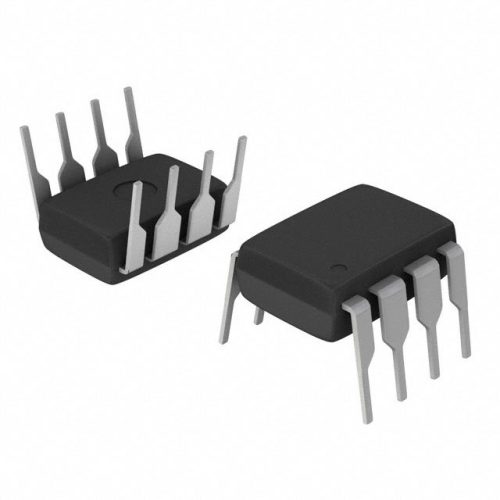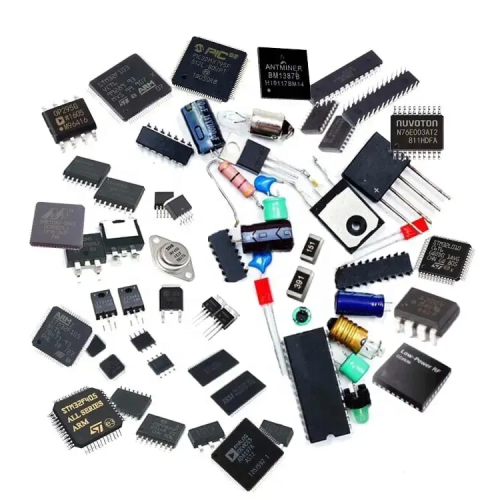MMA5212LCWR2 Overview
The MMA5212LCWR2 is a high-performance capacitive micromachined accelerometer designed for precise low-g acceleration sensing. Featuring a dual-axis measurement capability, it delivers accurate tilt and motion detection with minimal power consumption. Its compact 8-pin LCC package ensures easy integration into embedded systems where space and reliability are critical. Ideal for industrial and consumer electronics applications, this sensor offers stable performance over a wide temperature range with excellent sensitivity and low noise. The MMA5212LCWR2 is a reliable solution for engineers seeking robust acceleration data in compact form factors. For more details, visit IC Manufacturer.
MMA5212LCWR2 Technical Specifications
| Parameter | Value | Description |
|---|---|---|
| Measurement Range | ??1.5 g | Detects acceleration up to plus or minus 1.5 times gravitational force |
| Number of Axes | 2 | Measures acceleration along X and Y axes simultaneously |
| Supply Voltage (VDD) | 3.0 to 3.6 V | Operating voltage range ensuring compatibility with standard systems |
| Output Type | Analog | Provides continuous voltage output proportional to acceleration |
| Package | 8-pin LCC | Compact leadless chip carrier for space-constrained designs |
| Operating Temperature | -40??C to +85??C | Wide temperature range for reliable operation in harsh environments |
| Sensitivity | 800 mV/g (typical) | Voltage change per g-force, indicating sensor responsiveness |
| Noise Density | 100 ??g/??Hz | Low noise performance for precise measurement |
| Bandwidth | Up to 100 Hz | Frequency response suitable for motion and tilt detection |
MMA5212LCWR2 Key Features
- Dual-axis sensing capability: Enables simultaneous X and Y axis acceleration detection, providing comprehensive motion and tilt information in compact applications.
- Low power consumption: Operates efficiently within a 3.0 to 3.6 V supply voltage, extending battery life in portable and embedded devices.
- High sensitivity and low noise: 800 mV/g typical sensitivity with minimal noise interference ensures accurate and stable acceleration measurements.
- Wide operating temperature range: Reliable performance from -40??C to +85??C suits demanding industrial environments and outdoor applications.
- Compact 8-pin LCC package: Facilitates easy integration into space-limited designs while maintaining mechanical robustness.
- Analog output: Provides straightforward interface to microcontrollers and data acquisition systems without complex digital protocols.
MMA5212LCWR2 Advantages vs Typical Alternatives
This accelerometer offers distinct advantages over typical alternatives by combining dual-axis sensing with high sensitivity and low noise in a compact, low-power package. Its stable analog output simplifies integration compared to digital sensors requiring complex communication protocols. The wide temperature range and robust packaging enhance reliability in industrial applications. These features collectively ensure precise, efficient acceleration measurement, making it a preferred choice for engineers demanding performance and ease of use.
🔥 Best-Selling Products
Typical Applications
- Industrial equipment monitoring: Detects tilt and vibration in machinery to enable predictive maintenance and reduce downtime through precise acceleration sensing.
- Consumer electronics: Used in handheld devices for orientation detection and motion control, improving user interface responsiveness.
- Vehicle dynamics control: Supports stability and safety systems by providing real-time acceleration data for tilt and movement analysis.
- Robotics and automation: Facilitates accurate motion sensing for position feedback and control in automated systems and robotic platforms.
MMA5212LCWR2 Brand Info
The sensor is part of a well-established product family from a leading semiconductor manufacturer specialized in MEMS acceleration technologies. Renowned for delivering reliable, high-precision components, the brand ensures stringent quality control and consistent performance across its accelerometer portfolio. This device reflects the manufacturer??s commitment to innovation, durability, and customer-focused design, supporting a broad range of industrial and consumer applications worldwide.
FAQ
What is the measurement range of this accelerometer?
The device measures acceleration in the range of ??1.5 g, which allows it to detect subtle tilt and motion changes suitable for many low-g applications including orientation sensing and vibration monitoring.
🌟 Featured Products
-

“Buy MAX9312ECJ+ Precision Voltage Comparator in DIP Package for Reliable Performance”
-

QCC-711-1-MQFN48C-TR-03-1 Bluetooth Audio SoC with MQFN48C Package
-

0339-671-TLM-E Model – High-Performance TLM-E Package for Enhanced Functionality
-

1-1415898-4 Connector Housing, Electrical Wire-to-Board, Receptacle, Packaged
Does the sensor provide digital or analog output?
This accelerometer outputs analog voltage signals proportional to the measured acceleration, enabling straightforward interfacing with analog-to-digital converters or microcontroller ADC inputs without requiring digital communication protocols.
What is the typical operating voltage for this device?
The recommended supply voltage range is between 3.0 and 3.6 volts. This voltage range ensures optimal performance and power efficiency, making it compatible with common embedded system power supplies.
📩 Contact Us
Can this device operate in harsh environments?
Yes, it supports a wide operating temperature range from -40??C up to +85??C, making it suitable for industrial and outdoor applications where temperature extremes are common.
How does the dual-axis feature benefit my design?
Measuring acceleration along two axes simultaneously allows for comprehensive motion and tilt detection without requiring multiple sensors. This reduces component count and simplifies system design, improving reliability and reducing cost.





